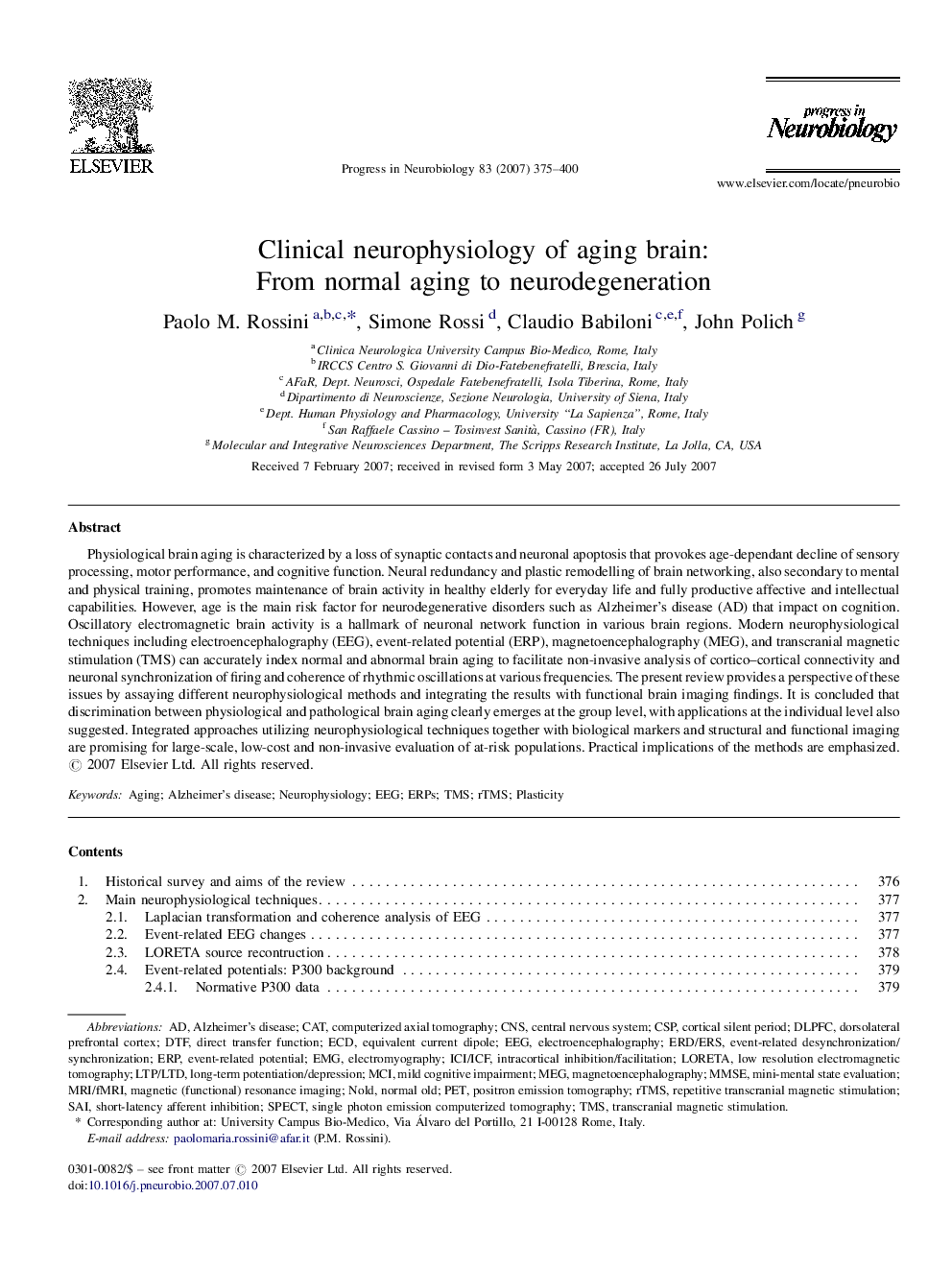| Article ID | Journal | Published Year | Pages | File Type |
|---|---|---|---|---|
| 4353769 | Progress in Neurobiology | 2007 | 26 Pages |
Physiological brain aging is characterized by a loss of synaptic contacts and neuronal apoptosis that provokes age-dependant decline of sensory processing, motor performance, and cognitive function. Neural redundancy and plastic remodelling of brain networking, also secondary to mental and physical training, promotes maintenance of brain activity in healthy elderly for everyday life and fully productive affective and intellectual capabilities. However, age is the main risk factor for neurodegenerative disorders such as Alzheimer's disease (AD) that impact on cognition. Oscillatory electromagnetic brain activity is a hallmark of neuronal network function in various brain regions. Modern neurophysiological techniques including electroencephalography (EEG), event-related potential (ERP), magnetoencephalography (MEG), and transcranial magnetic stimulation (TMS) can accurately index normal and abnormal brain aging to facilitate non-invasive analysis of cortico–cortical connectivity and neuronal synchronization of firing and coherence of rhythmic oscillations at various frequencies. The present review provides a perspective of these issues by assaying different neurophysiological methods and integrating the results with functional brain imaging findings. It is concluded that discrimination between physiological and pathological brain aging clearly emerges at the group level, with applications at the individual level also suggested. Integrated approaches utilizing neurophysiological techniques together with biological markers and structural and functional imaging are promising for large-scale, low-cost and non-invasive evaluation of at-risk populations. Practical implications of the methods are emphasized.
